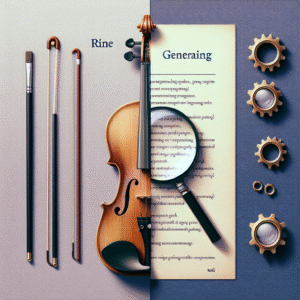Have you ever found yourself in a conversation with a chatbot and found it surprisingly effective? I have, and it got me thinking about how chatbot technology is truly revolutionizing communication. In a world that’s becoming increasingly digital, the role of chatbots is expanding beyond simple customer service queries to encompass various facets of our lives.
Understanding Chatbot Technology
Chatbots are computer programs designed to simulate human conversation through artificial intelligence (AI) and natural language processing (NLP). I’ve witnessed how these bots can answer questions, assist in shopping, and solve everyday problems, all while making the user experience more pleasant and efficient.
What Are Chatbots?
Chatbots can be classified into two main types: rule-based and AI-based.
| Type | Description |
|---|---|
| Rule-based | These bots follow a predefined set of rules and trigger specific responses based on user input. They’re great for straightforward requests but can become confusing when faced with unexpected queries. |
| AI-based | These bots utilize machine learning and NLP to understand the context and nuances of conversation. They adapt and learn from each interaction, constantly improving their ability to engage with users. |
I find it fascinating how the evolution from rule-based to AI-based chatbots has significantly broadened their application in various fields.
The Technology Behind Chatbots
At the heart of chatbot technology lies artificial intelligence, particularly machine learning algorithms and natural language processing. AI enables chatbots to learn from the interactions they have and improve over time. NLP, on the other hand, allows them to understand and interpret human language effectively.
When I realized how these technologies work together, it became clear why some chatbots can engage in such meaningful conversations.
The Evolution of Communication
Over the years, communication has transitioned from face-to-face interactions to digital formats like emails and instant messaging. This shift has led to numerous innovations, and chatbots have emerged as a logical next step in this evolution.
From Written Communication to Chatbots
Initially, communication was primarily written, which often led to misunderstandings due to the lack of immediate feedback. I remember having conversations through emails where the tone or intent got lost in translation.
Chatbots, with their interactive nature, have changed this dynamic by providing instant responses. They facilitate real-time communication, which can significantly enhance the customer experience.
Integration of Chatbots in Business
Businesses have quickly adopted chatbot technology due to its numerous benefits. For me, it’s impressive to see how companies are leveraging this technology to improve operational efficiency.
| Benefit | Explanation |
|---|---|
| Cost Efficiency | Chatbots can operate 24/7 without the need for breaks, reducing staffing costs for companies. |
| Enhanced Customer Experience | By providing instant responses, chatbots can improve user satisfaction significantly. |
| Data Collection | They can gather valuable customer data, which can be analyzed to improve products and services. |
This table illustrates how integrating chatbots into business operations can lead to improved efficiency and enhanced customer service.
The Role of Chatbots in Different Industries
I’ve come across several industries that have begun to utilize chatbot technology in innovative ways. Each has its unique application, showing just how versatile chatbots can be.
Customer Service
In the customer service space, chatbots act as the first point of contact for many customers. I’ve often interacted with chatbots for support, and I can see how they’re designed to address common queries efficiently.
E-commerce
E-commerce platforms are increasingly integrating chatbots to guide customers through the purchasing process. I’ve personally experienced how a chatbot can recommend products based on my preferences, making my shopping experience more personalized.
Healthcare
In healthcare, chatbots are being used to provide health information, schedule appointments, and even remind patients to take their medication. I can only imagine how a chatbot can ease the administrative burden on healthcare professionals and streamline patient interactions.
Education
Educational institutions are turning to chatbots to provide tutoring support and answer common questions from students. I think this is a brilliant way to make learning more accessible and engaging for those who might struggle with traditional methods.
The Benefits of Chatbot Technology
With the adaptability and efficiency of chatbots, I can highlight various benefits that come with their implementation.
Increased Accessibility
Chatbots make it possible for businesses to offer customer support around the clock. I appreciate how this enhanced availability can lead to higher satisfaction rates among users who seek immediate assistance.
Personalization
Modern chatbots have the ability to tailor responses based on user data and previous interactions. This level of personalization can make every customer feel valued and understood. I love when my shopping experience feels catered to my tastes and preferences.
Scalability
Chatbots can handle thousands of interactions simultaneously, which means customer service operations can scale up without needing to hire more staff. It’s incredible to think about the impact this has on productivity and growth for businesses.
Challenges and Limitations
While the rise of chatbot technology has been largely positive, it’s important to acknowledge the challenges and limitations that come with it.
Understanding Context
Even the most advanced AI-based chatbots can struggle to understand context or tone. I’ve found myself frustrated when a chatbot misinterprets my question, leading to unhelpful responses.
Over-reliance on Technology
As chatbot usage increases, there’s a risk that businesses might rely too heavily on automation, potentially lowering the quality of customer interactions. I personally believe that a balance between human touch and automated responses is necessary for a truly effective service.
Security Concerns
With any technology that manages user data, privacy and security are paramount. I am always cautious when sharing personal information with chatbots, and it’s essential for companies to reinforce their data protection measures.
The Future of Chatbot Technology
Looking ahead, I can envision several exciting trends that are likely to shape the future of chatbot technology.
Voice-Activated Chatbots
With the increasing popularity of voice-assistants like Siri and Alexa, I believe that voice-activated chatbots will become more common in both personal and business contexts. The convenience of speaking instead of typing can enhance user experience significantly.
Enhanced Natural Language Processing
As NLP technology continues to advance, I expect that chatbots will become even more adept at understanding human language nuances. This will lead to more natural and engaging conversations, transforming how we interact with technology.
Integration with Other Technologies
I can see chatbots being integrated with other emerging technologies, such as augmented reality (AR) and virtual reality (VR). This could create rich, interactive experiences that go beyond text-based conversation, making interactions even more immersive.
Conclusion
Chatbot technology is revolutionizing communication in ways I’ve never imagined. From enhancing customer experiences to streamlining business operations and providing innovative solutions across various industries, the potential seems limitless.
While certain challenges remain, the advancements in AI and NLP offer substantial room for improvement. As I look forward to the future of communication, I can’t help but feel excited about the possibilities that lie ahead—especially as chatbots continue to evolve and adapt to meet our ever-changing needs.
In a world increasingly reliant on digital interactions, chatbots are not just tools; they’re shaping the way we communicate and engage with one another. I wholeheartedly believe that as technology progresses, these digital companions will become an integral part of our everyday lives, making communication more seamless and enjoyable for everyone.






